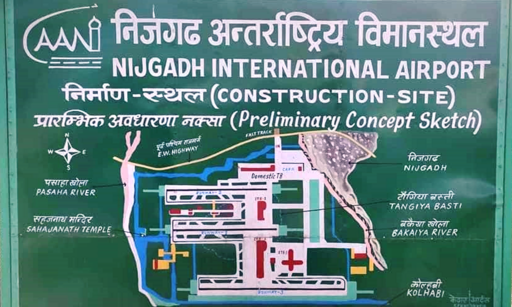
Photo: Subhmanish | Wikimedia Commons
Nepal already has three international airports: Tribhuvan International Airport, Pokhara International Airport, and Gautam Buddha International Airport. With problems existing in Pokhara International Airport, and virtually no international flights running, do we really need Nijgadh International Airport as well? Nepal has a list of many failed airports already.
The Dharan Airport’s scam is something that Nepalese aviation hasn’t recovered from anyhow. In such a scenario, many people are questioning whether Nijgadh International Airport is only going to put a financial burden to Nepal, besides an environmental one.
According to the Nepalese government, it will be the largest airport in the world and the first world-class airport in Nepal, capable of accommodating 60 million travelers annually and allowing wide-body aircraft to operate. While various people are discussing the potential of Nijgadh Airport being a top-class transit airport, there are a lot of dark aspects to this project.
History of Nijgadh International Airport
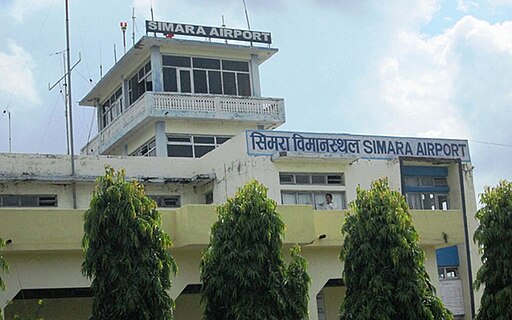
Photo: Barakhabar|Wikimedia Commons
In 1950, on April 23, Indian Ambassador Surjit Singh Majithia arrived in Nepal by Beechcraft Bonanza aircraft on Gauchar Airport (the airport that would later be named Tribhuvan International Airport[TIA]) marking a significant moment in the country’s aviation history. Some historians argue that aviation in Nepal began with the establishment of Simara Airport in 1946. On February 20, 1950, the first chartered plane took off from TIA, Nepal to Kolkata.
Five years later, in 1955, King Mahendra constructed an airport named Tribhuvan Airport. However, until 1957, they made the runway of grass. In 1960, Nepal joined the International Civil Aviation Organization (ICAO), and in 1964, they upgraded Tribhuvan Airport to Tribhuvan International Airport.
To date, Nepal has built 54 airports, of which only 35 are currently in use, leaving 19 airports inactive. One of these is Kangel Danda Airport, an aerodrome that is an alternative to the supposed most dangerous airport in the world– Lukla Airport. Three international airports currently exist, and if they construct Nijgadh Airport, it will become the fourth international airport. Originally, planners intended for Nijgadh to be the second international airport. During the five-year planning period from 1980 to 1984, officials made plans to construct the airport.
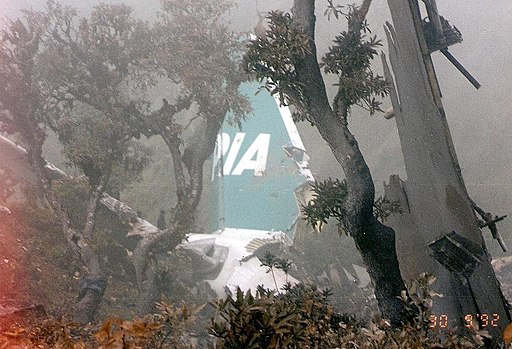
Photo: Coolgenx1 | Wikimedia Commons
In 1992, two air accidents occurred within three months in Nepal: Thai Airways International Flight 311 and Pakistan International Airlines Flight 268. Following these incidents, concerns about safety in Kathmandu led to plans for constructing an airport in the Terai region.
In 1995, eight cities were considered for the second international airport, and Nijgadh was ultimately selected. However, Nijgadh Airport is not located in Nijgadh Municipality; it lies within Kolhabi Municipality and Jeetpur Sub-Metropolitan City.
Breaking down the construction plan of Nijgadh International Airport
According to government policy, the airport will be constructed in two phases.
- First Phase: In this phase, the runway, taxiway, terminal building, and other airport facilities will be built.
- Second Phase: In the second phase, an additional runway and an airport city will be developed.
The government has designated an 80 km area for the airport and airport city, which includes forests and residences. The target is to cut down 700,000 trees in the first phase.
Why Nijgadh International Airport was envisioned?
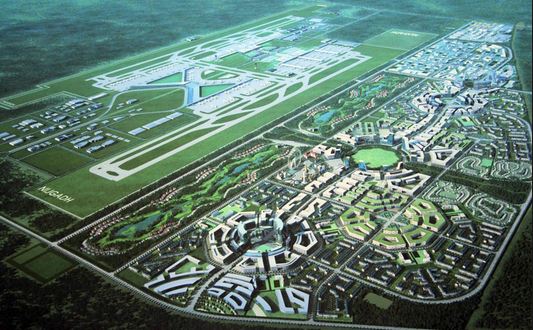
Photo: Nijgadh| Wikimedia Commons
There are several reasons behind the proposal of constructing the Nijgadh International Airport. It is just 68 km from Kathmandu, a distance that can be covered in about one hour. Some of the other reasons behind constructing the airport include:
- Due to the geographical conditions of Nijgadh, the distance between two rivers is 10 km, which is rare in the Terai region, allowing construction without affecting the natural flow of the rivers.
- In winter, fog is less prevalent in this region compared to the other eight locations considered.
- The site is also close to the East-West Highway, making construction easier due to the flat surface, which will help keep costs low. If additional space is needed for the airport, it can be accommodated.
- At that time, there were no hub airports in South Asia, prompting plans to establish Nijgadh as a hub airport.
In 1997, researchers began studying Nijgadh Airport, and officials allocated a budget. However, political instability, the royal massacre, and various policy changes halted work on the airport. After the establishment of democracy, Maoist party leader Pushpa Kamal Dahal became Prime Minister, and in 2008, the government made a decision to develop the airport using the Build, Own, Operate, Transfer (BOOT) model. Under this model, the company would return profits to the government after a certain period. In 2010, the Civil Aviation Authority of Nepal
(CAAN) made a deal with the Korean company Landmark Worldwide for a detailed feasibility study, which was completed in 2011. However, during this time, the government’s and political parties’ primary focus was on drafting the constitution. The failure to finalize the constitution led to growing political problems, and work on the airport was halted once again due to these issues.
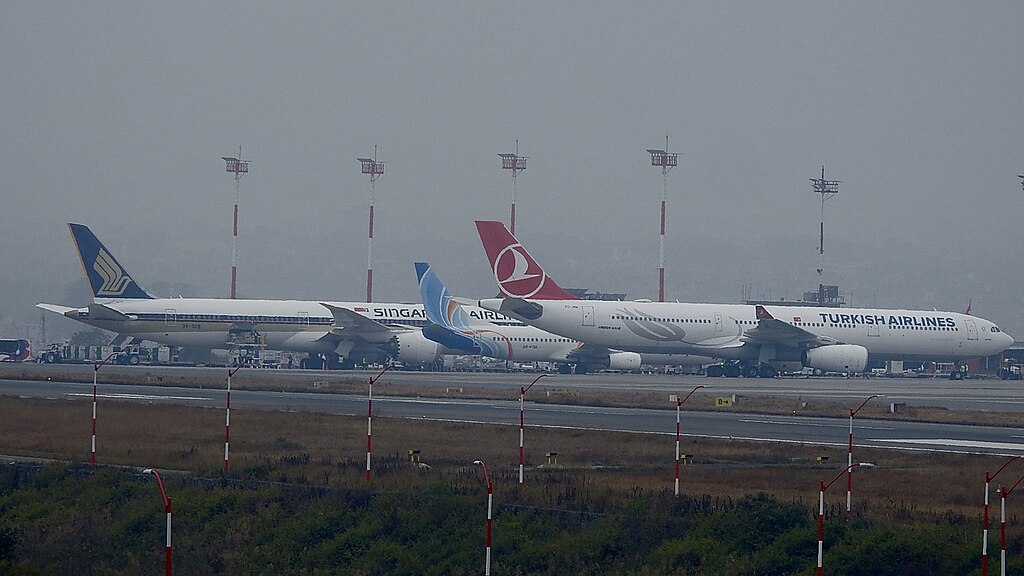
Photo: Chomolungma8848 | Wikimedia Commons
In 2015 Turkish airline aircraft slipped off the runway at Tribhuvan International Airport due to low visibility, resulting in the airport’s closure for four days. A month later, a massive earthquake struck Nepal, increasing the workload at Tribhuvan International Airport due to assistance from various countries.
Following these events, the government began to take the Nijgadh Airport project seriously and granted permission to the Civil Aviation Authority of Nepal (CAAN) to acquire 8,050 hectares of land. In 2016, after the earthquake, leaders discussed the country’s need for redevelopment projects at an international summit.
India’s foreign affairs Minister, Sushma Swaraj, said that India is willing to work and assist in Nepal’s big scale construction project of Nijgadh International Airport:
“The two visits of Prime Minister Narendra Modi to Nepal last year gave a significant impetus to bilateral cooperation in different fields. Hydropower projects now need to be speedily implemented and work on construction of the Kathmandu-Nijgadh fast-track road and the Nijgadh airport with India’s participation should be expedited.”
But Nepalese Prime Minister KP Sharma Oli rejected this offer. After all, India had imposed a lockdown on Nepal then. After this investment board of Nepal started to get offer from different country and government shortlisted the Zurich airport to develop Nijgadh airport. Nepali Times reported in 2020 that Nepal was finalising an agreement with Zurich Airport International (ZAI) to develop Nijgadh Airport with the expected costs of construction being $3.45 billion. ZAI spokesperson, Raffaela Stelzer, had commented:
“In 2019 we expressed our general interest in this project to the government. Since then the ball has been in the court of the Nepalese government. So, the project has never really started for us and we are not able to say more about it at the moment.”
What the Environmental Impact Assessment report say about Nijgadh International Airport?
In 2018, the team submitted the Environmental Impact Assessment (EIA) report, but critics alleged that the report was incomplete and the report was not published. A report from The Third Pole claimed that the team copied the EIA from a hydropower project. Someone filed a case in the Supreme Court, which ordered a halt to the work in 2019.
The EIA report’s assessment was alarming:
“…EIA report has identified that the forest is home to 333 plant species, 23 species of mammals, 31 species of birds, and 10 species of reptiles. The forest of Bara district also has 22 endangered plant species. Some of the rare species found in this region include Asian Elephants, Bengal Tigers, Hyena, and Giant Hornbill. Environmentalists have claimed that the proposed site is also a migration corridor for the Asian Elephants. “
An environmentalist’s assessment of the report further read:
” According to the EIA report, a total of 754 samples were taken in 12 classified forest types covering about 7,587 ha to estimate losses. During the construction process, an estimated 586,001 numbers of trees over 30 cm dbh (Diameter at Breast Height), and 1,864,820 pole-size plants will be cleared.The valuation which is estimated at around NRs. 231 billion, considers the loss of carbon sequestration, oxygen release, naturally occurring forest nutrients, and the loss of non-timber forest products. “
A few reasons which hint towards the need of an additional international airport in Nepal
From 2009 to 2018, the report indicated an annual increase of 9.2% in international flights, with most international flights currently operating from Tribhuvan International Airport. The number of flights at Tribhuvan International Airport increased by 11.75%. Although the airport has a capacity of 1,350 passengers per hour, it is currently serving over 2,200 passengers per hour, leading to delays in landing and takeoff. If this growth continues, it will become increasingly difficult for Tribhuvan International Airport to manage the demand.
Due to the limited airspace and residential areas surrounding the airport, it is difficult to extend Tribhuvan International Airport. Additionally, the mountains around Kathmandu prevent the use of an Instrument Landing System (ILS).
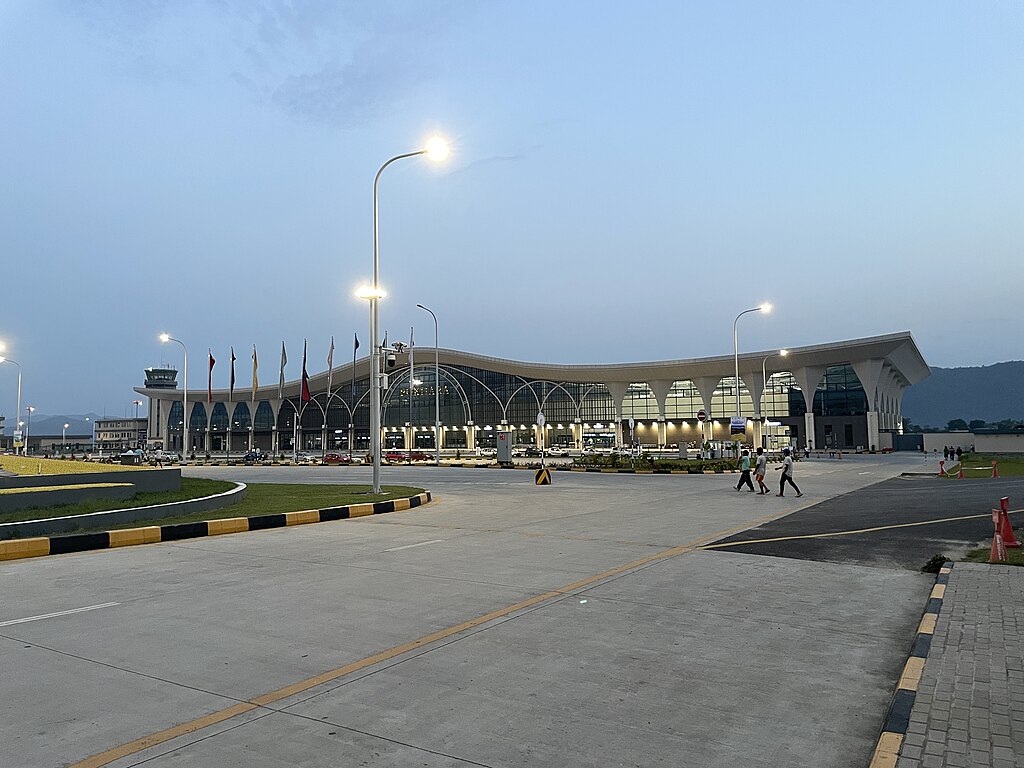
Photo:Hariram sigdel |Wikimedia commons
Pokhara and Gautam Buddha International Airports are facing challenges in securing air routes from India primarily due to geopolitical tensions and restrictions imposed by India. The Indian government has been cautious in allowing flights over its airspace, particularly for larger passenger planes, which limits international connectivity for these airports. Pokhara and Gautam Buddha International Airports can accommodate some flights, but they are not receiving air routes from India.
The government wants to first construct and then establish Nijgadh International Airport as an international hub. As a landlocked country, Nepal could greatly benefit from air transport for imports and exports. However, the airport project is controversial for two main reasons:
- Environment and Biodiversity
- Socio-Economical
Environment and Biodiversity
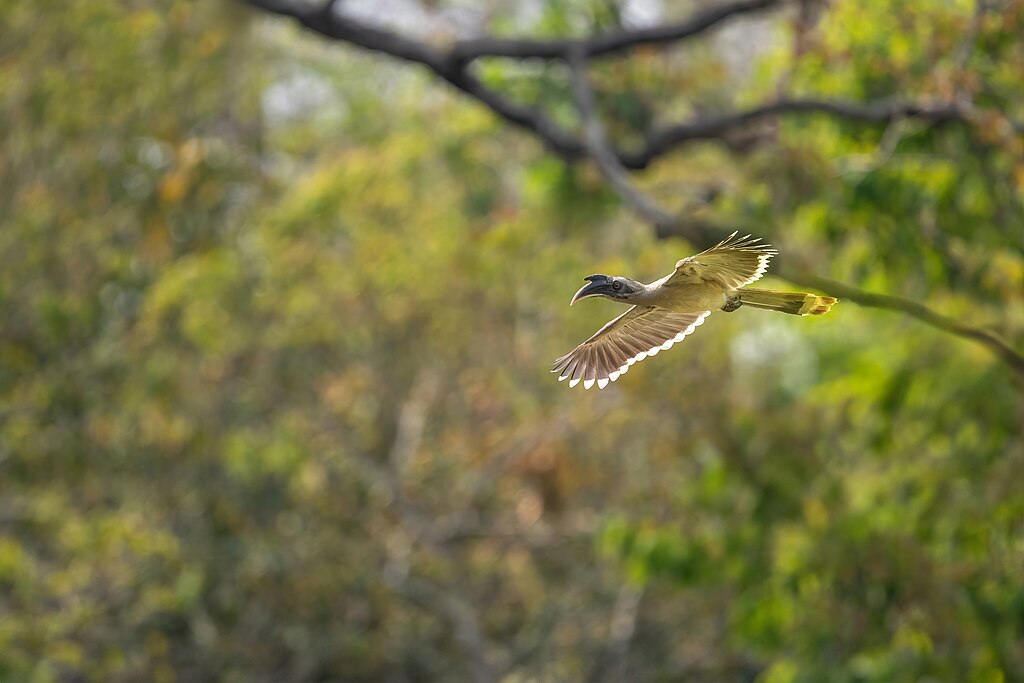
Photo: Mildeep | Wikimedia Commons
During the pre-feasibility study, decision-makers did not establish a policy regarding the environment and biodiversity, which is why the necessary assessments were not conducted at that time. The airport initially required only 1,300 hectares of land, but the airport city project has increased the requirement to 8,046 hectares, with 90% of this land being subtropical forest, which is decreasing in Nepal.
The forest is home to 2.4 million trees that collectively absorb 2,250 tons of carbon annually. It also hosts many rare plants and wildlife, including Asian elephants, tigers, Himalayan goral, hyenas, and 23 other animal species, as well as 31 bird species. This forest is one of the largest habitats for wildlife.
According to environmental researchers, if the project proceeds and workers cut down trees, it could lead to the most significant deforestation in 50 years. Such deforestation could impair soil absorption, potentially resulting in severe flooding and water shortages during the winter season.
Socio-Economical disruptions that can be caused by Nijgadh Airport
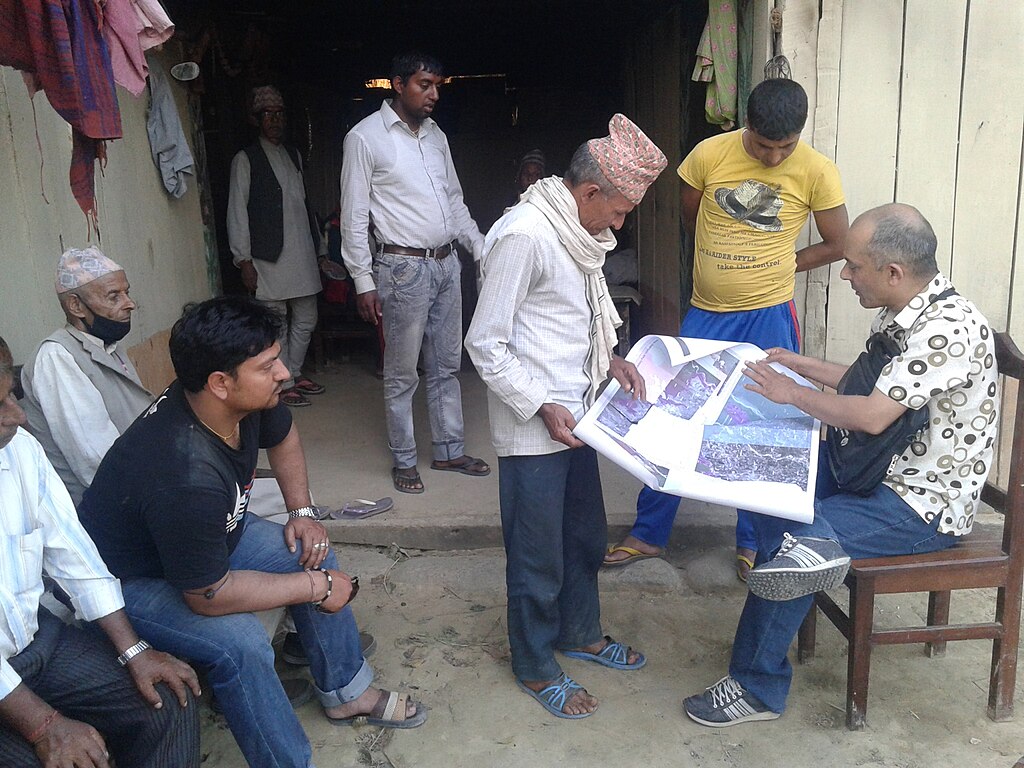
Photo: Rajkumar Rimal| Wikimedia Commons
In Nijgadh, there are not only forests and wildlife but also residential areas that have been inhabited since 1980. Here are some details about the different residential places i Nijgadh:
| Kathgath | Tangia basti | Matiyani toll |
| 132 family | 1476 family | 40 family |
| Total | 1648 family |
In the largest residential area, Tangia Basti, the residents do not possess land ownership documents (called Lalpurja in Nepalese) that many land-owners in Nepal possess. However, the EIA report states that only those with proper documentation will receive compensation.
Do we really need Nijgadh International Airport ?
When the project initiated, stakeholders found no hub airports in the South Asia region, but now several exist. In this context, is it still appropriate to develop the airport as a hub? The Nijgadh municipality is located 5 km from the selected airport site, where the government is also attempting to develop a smart city. How much forest area will be destroyed for the airport city in this case?
Further the construction of the airport will mean that there will be four international airports within the vicinity of 200 kilometers – a prospect that’s almost ridiculous for a nation that is less than 200 kilometers across and less than 900 kilometers.
Consequences
To operate the aircraft, we need air routes, which require assistance from neighboring countries. This is a mega project, and the investment will be substantial. Both international airports received financing through loans. After the pre-feasibility study of Nijgadh International Airport, experts estimated the total cost to complete the project at 13 trillion rupees. Nepal does not have this amount of money to fund the project independently. If it is financed through loans and the project fails to operate, the country will be in debt. In the worst case scenario, the airport then might turn out to the like Mattala Rajapaksha Airport, and be dubbed the emptiest airport, if not of the world, certainly of Nepal.
Politicians are backing up an airport that should never be constructed?
Politicians and party leaders are eager to construct the airport in Nijgadh. Some ministers have stated at various functions that they will build the airport, and others have spoken about it in the parliament. The government has also allocated a budget for preliminary work, and to date, it has spent more than 3 million.
However, the need for Nijgadh Airport first surfaced almost three decades ago, a time when there were no hub airports in South Asia. But now, Delhi Airport, Mumbai Airport, among others airports around Nepal rank as the world’s finest and busiest.
Further, the construction of Pokhara International Airport has already added a lot of debt to the nation, with Nepal urging China to turn the loan it took for the airports construction to a grant. When Nepal has exhausted the passenger capacity in Tribhuvan International Airport, Pokhara Airport, and Gautam Buddha, perhaps then the nation might need a fourth airport. Or else, the construction of Nijgadh might simply be a project that, some Zen-ists might say would be “adding legs on a snake“.
Conclusion
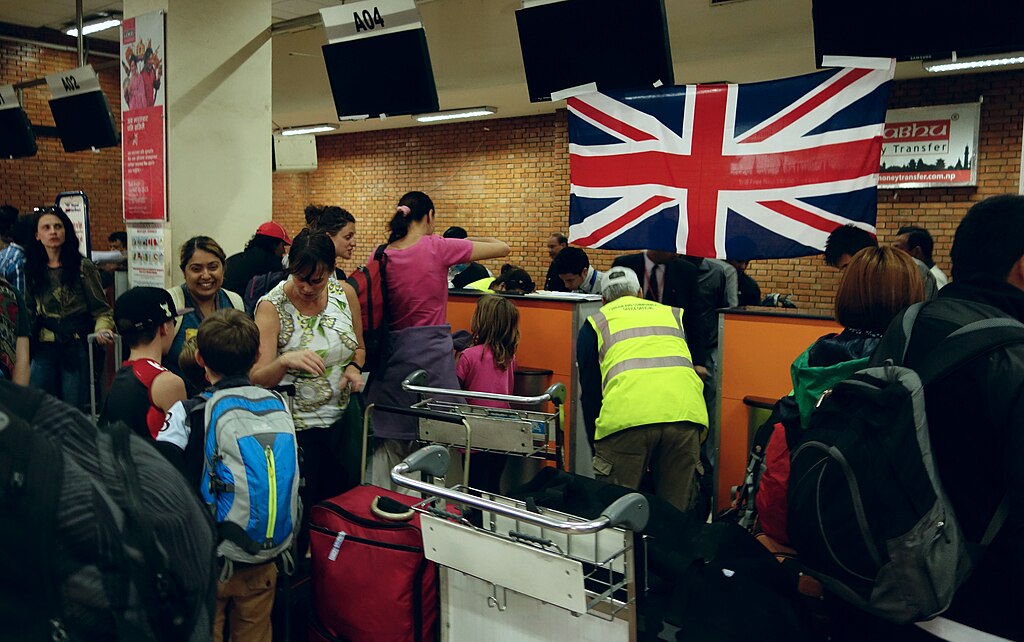
Photo: Foreign and Commonwealth Office | Wikimedia Commons
The extreme workload at Tribhuvan International Airport and the growth in passenger numbers indicate that Nepal needs more airports. Currently, there are no airports capable of operating wide-body aircraft. Is constructing a large airport the only solution, or are there other viable locations? Why can’t the government focus solely on building the airport instead of an airport city?
It is evident that in Nepal, researchers lack proper investigation, and decision-makers make investments without thorough analysis. The government have discussed the Nijgadh project for 30 years, yet no work has started, nor have any plans been made.. In a country like Nepal, it is challenging to develop without causing deforestation. The government should manage development and environmental concerns wisely.
